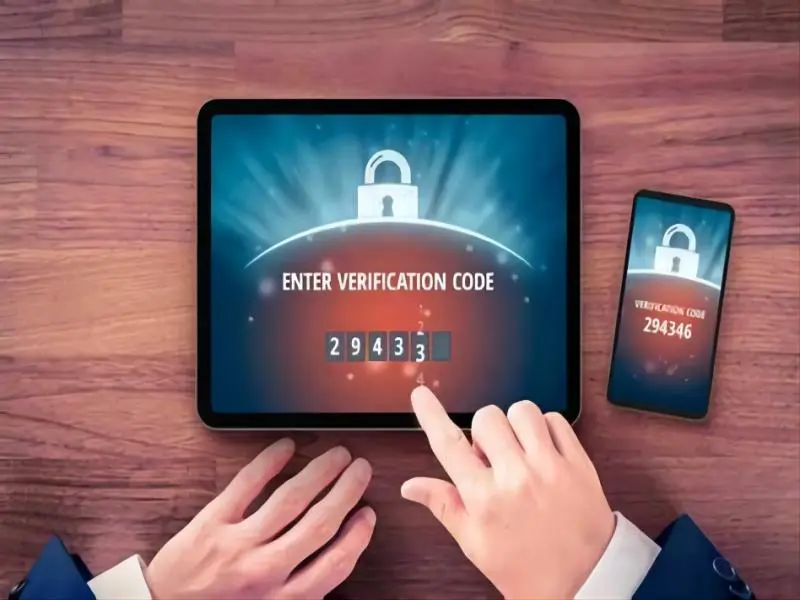- MFA is considered one of the strongest methods of authentication. While not foolproof, MFA is one of the most effective steps organisations can take to dramatically reduce the risk of a breach.
- Multi-factor authentication (MFA) reduces the risk of security breaches occurring and keeps data safe.
- With MFA’s simple deployment and management as well as its integration with a broad range of applications, teams are freed up and can focus this time on more strategic tasks.
Multi-factor authentication, or MFA, protects your applications by using a second source of validation before granting access to users. Common examples of multi-factor authentication include personal devices, such as a phone or token, or geographic or network locations. MFA enables organisations to verify the identities of users before they can gain entry to critical systems.
As organisations digitise operations and take on greater liability for storing customer data, the risks and need for security increase. Because attackers have long exploited user login data to gain entry to critical systems, verifying user identity has become essential.
Authentication based on usernames and passwords alone is unreliable and unwieldy, since users may have trouble storing, remembering, and managing them across multiple accounts, and many reuse passwords across services and create passwords that lack complexity. Passwords also offer weak security because of the ease of acquiring them through hacking, phishing, and malware.
How does multi-factor authentication work?
MFA requires means of verification that unauthorised users won’t have. Since passwords are insufficient for verifying identity, MFA requires multiple pieces of evidence to verify identity. The most common variant of MFA is two-factor authentication (2FA). The theory is that even if threat actors can impersonate a user with one piece of evidence, they won’t be able to provide two or more.
Proper multi-factor authentication uses factors from at least two different categories. Using two from the same category does not fulfil the objective of MFA. Despite the wide use of the password/security question combination, both factors are from the knowledge category–and don’t qualify as MFA. A password and a temporary passcode qualify because the passcode is a possession factor, verifying ownership of a specific email account or mobile device.
Also read: Who is Marissa Mayer? The Sunshine CEO was Google’s first female engineer before focusing on AI
Benefits of MFA
Increases security
Hackers are prevented from using devices, stolen passwords, or other discrete pieces of information to access your network by requiring users to provide multiple credentials before they can access accounts. According to a recent Ping Identity survey, multi-factor authentication is regarded by security and IT professionals as the best security measure to implement for safeguarding data on-premises and in public clouds.
Reduces risk from compromised passwords
While passwords are the most common form of authentication, they are the least secure. People may reuse or share passwords, which can also be stolen or guessed, leading to exposure for account holders and system administrators.
Customisable security solution
With the various options available for each authentication factor, enterprises can tailor the user experience to suit their specific requirements. On their smartphones, users may, for instance, have access to fingerprint scanners but not retinal or voice recognition ones. Certain use cases might only need two authentication factors, while others might need all three.
Compatible with single sign-on (SSO)
Applications can incorporate MFA and integrate it with single sign-on. It is no longer necessary for users to generate several distinct passwords or make the dangerous decision to use the same password across various applications to log in. When used in conjunction with SSO, MFA lowers friction and authenticates users, saving time and increasing productivity.
Scalable for changing user bases
It is easy to customise multi-factor authentication to meet your business needs. All users, including partners, customers, and employees, can set up MFA. When used in conjunction with multi-factor authentication (MFA), single sign-on removes the need for multiple passwords, expedites the login process, enhances user experience, and lowers the volume of calls to IT departments seeking help with passwords.
Also read: Demis Hassabis: Co-founder of DeepMind was a child chess prodigy, then AI pioneer
Regulatory compliance
MFA may be required by regional or industry regulations. For example, to stop unauthorised users from accessing payment processing systems, the Payment Card Industry Data Security Standard (PCI-DSS) mandates the implementation of MFA in specific scenarios. Additionally, it aids in fulfilling the strict customer authentication standards set forth by the EU’s Payments Service Directive 2 (PSD2). Furthermore, MFA facilitates adherence to the Health Insurance Portability and Accountability Act (HIPAA) by healthcare providers.
Enables enterprise mobility
The pandemic accelerated the digital transformation and forced many organisations to consider remote work options. Productivity is increased when workers can quickly and securely access the resources they require using mobile devices. While maintaining network and data security, using MFA to log into business applications—especially when combined with SSO—offers employees the flexibility and round-the-clock access they require.
Adaptable for different use cases
Greater security is necessary in some circumstances, such as when carrying out high-value transactions and gaining access to sensitive data from unidentified networks and devices. Adaptive MFA evaluates risk by utilising contextual and behavioural data, including IP address, geolocation, and time elapsed since the last authentication. Authentication factors can be added as needed to obtain a higher level of assurance about a user’s identity if the IP address is deemed risky (e.g., coffee shop or anonymous network) or if other red flags are noted.
The most important thing that most businesses can do to stop cybersecurity incidents is to implement multi-factor authentication. Because agencies and infrastructure are being targeted more frequently, governments are taking cybersecurity more seriously, even in sectors where MFA is not currently necessary for regulatory compliance. Purchasing an MFA solution is a practical approach to safeguard your resources and prevent illegal access to your data.

